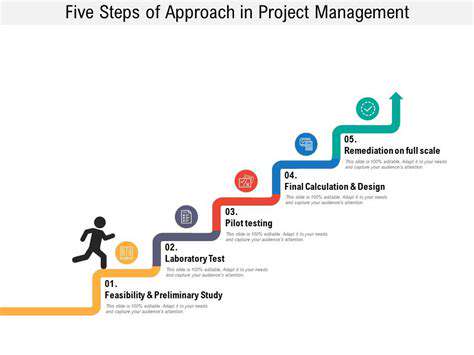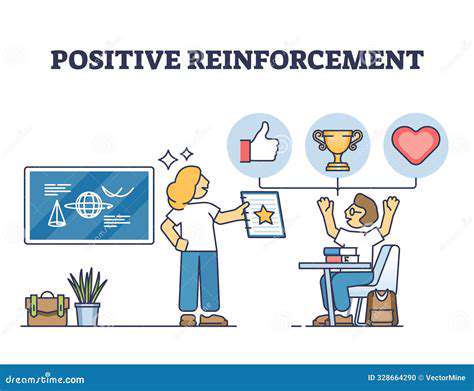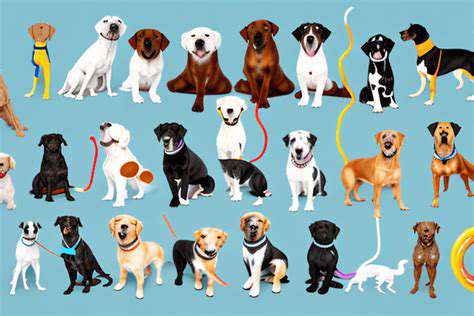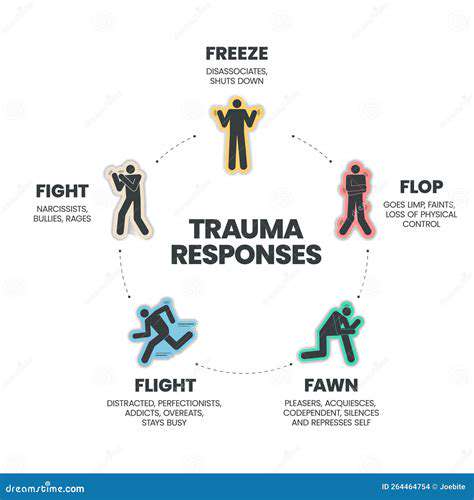Teaching "Stay" and "Wait": Understanding the Difference and Training Both
Building a Solid Foundation for Stay
Understanding the Importance of Stay
The stay command represents one of the most critical skills in canine education, serving as the bedrock for more complex behaviors while safeguarding both the animal and its environment. When dogs master this instruction, owners gain the ability to position their pets securely while simultaneously teaching vital self-control and attentiveness to human signals. This fundamental skill paves the way for subsequent training milestones and strengthens the human-animal connection in remarkable ways.
Beyond basic obedience, a reliable stay command prevents numerous problematic scenarios - from enthusiastic jumping on visitors to dangerous dashes into traffic. The trained behavior proves invaluable during veterinary examinations or when encountering unfamiliar stimuli. This single command expands a dog's privileges while demonstrating the trust established through consistent training.
Creating Optimal Training Conditions
Successful instruction begins with environmental preparation. Select spaces with minimal auditory and visual distractions, allowing complete focus on the training process. Maintain an encouraging, steady vocal tone throughout sessions, avoiding any harsh corrections. Short, frequent practice periods yield better results than lengthy, exhausting drills. Always conclude on a positive note to maintain the dog's enthusiasm.
Implementing the Stay Protocol
Initiate training in controlled settings using unmistakable verbal markers (stay) paired with unambiguous hand signals (palm facing outward). Reinforce compliance instantly, even for momentary successes, gradually extending duration requirements. This incremental approach builds confidence while establishing clear expectations.
Troubleshooting Common Difficulties
Distraction management presents the primary obstacle during early training phases. Begin in sterile environments, slowly introducing stimuli as proficiency develops. For particularly distracted pupils, strategic treat placement can guide proper positioning. Celebrate every micro-achievement, as positive reinforcement accelerates learning.
Restlessness requires patient correction - gently reposition wandering dogs without verbal reprimands. The key lies in consistent, calm reinforcement of expectations. Gradually lengthen stationary periods while maintaining achievable standards to prevent frustration.
Consolidating the Learned Behavior
Diversified rewards (edible treats, verbal praise, favorite toys) maintain engagement throughout the reinforcement phase. Practice across multiple locations with systematically increased distractions cements the behavior. Even brief compliance deserves recognition during initial generalization stages.
Advancing the Training Program
As basic proficiency stabilizes, introduce controlled complications - unfamiliar environments, moderate noise levels, mild movement distractions. Progressive duration extensions develop the canine's patience and focus capacity. Each successful challenge overcome strengthens the behavior's reliability in real-world applications.
Mastering the Wait Command

Conceptual Foundations of Wait
This sophisticated command transcends simple pause instructions, representing a strategic resource management tool within canine cognition. Proper implementation transforms wait from passive compliance to active self-regulation, preventing behavioral bottlenecks and ensuring smooth environmental navigation. The mechanism enables mental task prioritization, optimizing the dog's cognitive resources.
This cognitive processing system allows asynchronous behavior modulation, creating more fluid responses to complex situational demands. The canine brain automatically manages these waiting periods, allocating attention appropriately across competing stimuli.
Practical Implementation Techniques
Effective wait training involves multiple validation stages - environmental assessment, handler positioning, and duration calibration. Meticulous attention to these elements prevents confusion and ensures consistent responses. The core philosophy centers on preventing cognitive overload through structured expectation management.
Operational Advantages
The wait command delivers measurable performance benefits in real-world applications. Strategic deployment manages environmental demands without compromising response speed or decision accuracy. This proactive approach creates safer, more predictable interactions in dynamic settings.
Additionally, the trained behavior provides adaptive capacity during high-stimulation events, maintaining composure when encountering novel situations. This flexibility proves invaluable for urban environments or crowded spaces.
Technical Execution Details
Several physiological factors influence wait effectiveness - including appropriate duration limits to prevent frustration and monitoring systems for stress signals. Understanding these biological parameters ensures humane, effective training.
Equally crucial are contingency plans for command breakdowns. Robust recovery protocols maintain training integrity when initial waits fail, preventing complete behavioral collapse.
Error Management Strategies
Comprehensive fault protocols address premature movement or attention lapses during wait periods. Well-designed correction systems enable graceful behavioral recovery without complete retraining. This preserves overall reliability while allowing for occasional mistakes.
The system should clearly identify and communicate performance errors, enabling timely corrective action before patterns become ingrained.
Performance Monitoring
Continuous observation identifies potential stress points or confusion in wait execution. Regular assessment provides crucial behavioral data, allowing proactive training adjustments before problems escalate.
Implementing structured evaluation metrics ensures the command remains effective across different contexts and difficulty levels. This data-driven approach optimizes long-term retention.
Scalability Considerations
Progressive training techniques expand wait capabilities to handle increasingly complex scenarios. This involves graduated environmental challenges and duration expectations. Systematic difficulty increases prepare dogs for real-world applications where extended waits may prove necessary.
Addressing Training Obstacles

Initial Resistance Solutions
Canine reluctance toward new commands reflects natural caution rather than defiance. This hesitation often stems from uncertainty about expectations or perceived threat in unfamiliar situations. Effective trainers address these concerns through clear, consistent communication and demonstrative modeling.
Comprehensive socialization and positive reinforcement overcome most initial resistance. Creating supportive learning environments where animals feel secure accelerates command acquisition. Patient, reward-based methods ultimately produce more reliable compliance than coercive techniques.
Scope Management Techniques
Training programs frequently suffer from objective creep - adding unnecessary complexity before mastering fundamentals. Establish clear behavioral benchmarks and sequential milestones before beginning instruction. Communicate these standards consistently to all household members involved in training.
Implement structured progression systems that require mastery of simple versions before attempting advanced applications. This phased approach maintains control and prevents training overload.
Quality Maintenance Protocols
Sustaining command precision requires ongoing reinforcement and refinement. Establishing consistent performance standards, combined with regular practice sessions, prevents behavioral degradation over time.
Incorporating spontaneous testing throughout daily routines reinforces reliability. These unannounced drills verify true understanding beyond structured training contexts. The integration of commands into regular activities ensures they remain practical tools rather than artificial exercises.
Time Management Solutions
Effective training accommodates modern time constraints through efficient session design. Brief, focused drills integrated into daily routines often prove more effective than occasional marathon sessions. This little and often approach aligns with canine attention spans and learning patterns.
Task prioritization ensures critical commands receive adequate attention before moving to less essential behaviors. This strategic focus prevents superficial training that fails to produce reliable results.
Behavioral Debt Prevention
Training shortcuts create behavioral debt - superficial compliance masking underlying understanding gaps. Proactive correction of imperfect execution prevents accumulation of these deficits. Allocate specific refinement sessions to address weaknesses before they become ingrained.
Implement systematic review cycles that revisit previously learned commands, ensuring they maintain precision over time. This ongoing maintenance prevents the need for complete retraining later.

Read more about Teaching "Stay" and "Wait": Understanding the Difference and Training Both
Hot Recommendations
- The Impact of Early Socialization on a Dog's Interaction with Other Animals
- Car Travel and Puppy Socialization: Making the Journey a Positive Experience
- The Importance of Early Environmental Exposure for Puppy Development
- Taking Your Puppy to the Vet: Positive Socialization Strategies
- Making Training a Positive Experience for Your Puppy
- Public Transportation and Puppy Socialization: A Step by Step Guide
- Safe Socialization: Allowing Others to Pet Your Puppy
- Helping a Puppy Who Struggles with "Stay"
- Positive Puppy Interactions: Making Meetings with New Friends Fun
- No Treats Needed? Training Basic Commands with Verbal Praise











